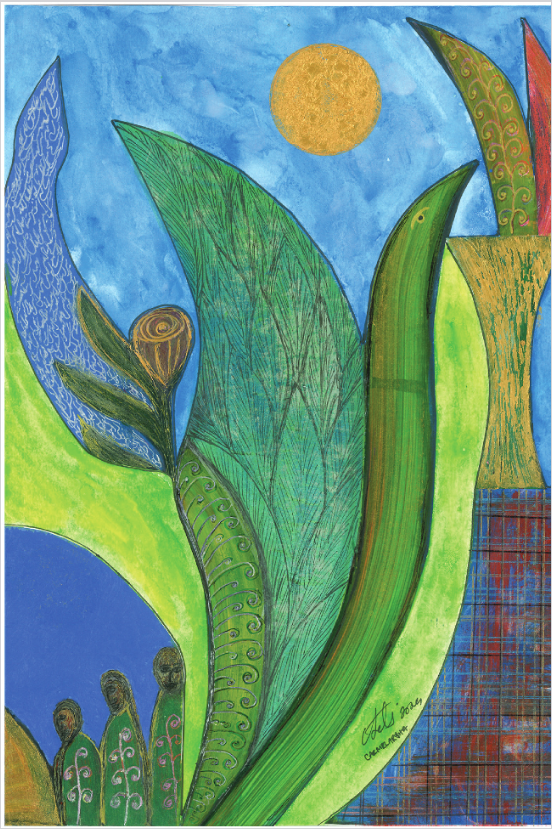What could integration with refugees look like?
Published: 1 September 2025
1 September 2025: Supporting the publishing of their new book, A Handbook of Integration with Refugees, Professor Alison Phipps, Dr Dan Fisher, and Dr Esa Aldegheri explain what refugee integration is and introduce the handbook, which aims to bring together academics, policymakers, and practitioners working in refugee integration.
Supporting the publishing of their new book, A Handbook of Integration with Refugees, Professor Alison Phipps, Dr Dan Fisher, and Dr Esa Aldegheri explain what refugee integration is and introduce the handbook, which aims to bring together academics, policymakers, and practitioners working in refugee integration.
Blog by Professor Alison Phipps, Dr Dan Fisher, and Dr Esa Aldegheri. This blog was originally published on the Channel View Publications and Multilingual Matter website on 19 August 2025.
Where does integration take place? When does integration start to come about? What supports or hinders integration?
In A Handbook of Integration with Refugees: Global Learnings from Scotland, we embark on a situated analysis of what refugee integration is, how its growth can be nurtured, what the barriers are to its encouragement, and how refugees form an integral part of this process.
Integration takes place in communities. Think community halls, places of worship, language classes, protest marches and the sharing of food at community events. In this context the responsibility for encouraging integration lies with both existing community groups and with those joining. Yet integration also takes place in the realms of public policy – where integration can also be actively discouraged. While states prefer to imagine refugee integration starting at the point when refugee status is granted, a person’s integration journey actually starts long before this moment. Therefore, although refugee integration requires community groups and refugees to come together, the chapters in this edited book also discuss the structural challenges that inhibit integration and the policy changes needed to unpick these.
As the world’s politics change, refugee integration is increasingly taking place in institutions and communities that may have previously had little contact or understanding of how they will change through integrating new people and practices into their midst. We reflect on the interplay of research undertaken with and by refugees and the ways new communities are made in the process, not least catalysed by crisis, creativity and care. The collective approach to the work challenges notions of linear integration or the well-worn critiques of integration as assimilationist, reclaiming the concept. We foreground the leavening processes supporting integration, which often happen out of sight, and certainly not within the domains of control of policy or delivery plans. Despite this, they come to form the basis of critique and abundance of goodwill and ideas in the communities most affected.
The book’s audience will include practitioners working in the context of migration and those involved in policymaking. As such, the edited chapters cover a wide range of topics within the context of refugee integration, grouped by theme with the understanding that all aspects of integration processes are interconnected. These topics include community development, law, language, arts-based methods, place, education, housing and integration policymaking. Complementing the book’s academic chapters are ‘Interventions’ – written by a wide range of practitioners working to support integration in Scotland and beyond, including countries in the Global South – which serve to provide situated perspective and draw out emotions that are key to embodied experiences and understandings of integration. The Interventions also echo the many interruptions which are part of the lived reality for people seeking refuge, disrupting false expectations of order and linear narrative related to integration that readers might otherwise take away from the book’s arguments.
As editors, we want to make the book accessible to a wide range of audiences, including people who might not have the time or inclination to read full-length chapters. We also intend to give a practical and situated view of refugee integration in the context of Scotland, while making explicit the relevance of these learnings to a wide range of international contexts. We hope to widen the breadth of conversations on the topic of integration by ensuring that people with lived experience of forced displacement contribute to a significant proportion of the book’s content. We aim to cover a wide range of ‘aspects of integration’ while also providing a resource of practical use for people in different areas working to support integration in Scotland and beyond.
To echo the words of Sabir Zazai OBE, CEO of the Scottish Refugee Council: we hope that this book “will go a long way in inspiring a community of people right across the globe to nurture our values of welcome, hospitality and work for creating a more welcoming world for all.”
More information about the book
For more information about this book please see the Channel View Publications and Multilingual Matters website.
This book is available open access, download it here.
Authors
Professor Alison Phipps holds the UNESCO Chair in Refugee Integration through Languages and the Arts at the University of Glasgow where she is also Professor of Languages and Intercultural Studies.
Dr Dan Fisher is a Research Associate at the Centre for Public Policy at the University of Glasgow. He is a political geographer with an interest in borders, processes of asylum determination and refugee integration.
Dr Esa Aldegheri is a Research Associate at the University of Glasgow. She holds a Leverhulme Early Career Fellowship investigating how unequal narratives and borderings of refugee journeys affect integration, with a focus on Scotland as an internationally relevant case study.
Photo by Ashkan Forouzani on Unsplash

First published: 1 September 2025
This blog was originally published on the Channel View Publications and Multilingual Matter website on 19 August 2025.
Congratulations to Dr Dan Fisher, Professor Alison Phipps and Dr Esa Aldegheri on the publication of A Handbook of Integration with Refugees.
For more information about this book please see the Channel View Publications and Multilingual Matters website.

Cover art by Adel and Carmel Salmanzadeh

